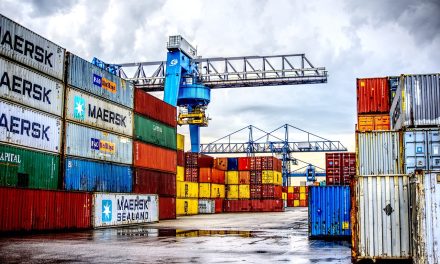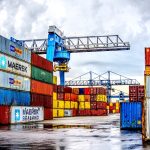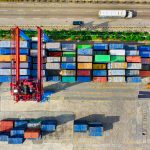Transporting oversized cargo poses unique challenges that require specialized solutions to ensure safe and efficient delivery. Whether it’s heavy machinery, large industrial equipment, or large-scale construction materials, handling oversized cargo demands meticulous planning and expertise. In this blog post, we’ll explore the key challenges associated with transporting oversized cargo and provide practical solutions to address these challenges effectively.
1. Understanding Oversized Cargo
Oversized cargo, also known as heavy or abnormal loads, refers to shipments that exceed standard dimensions or weight limits set by transportation authorities. These shipments often require special handling, permits, and equipment due to their size and weight.
- Types of Oversized Cargo:
- Heavy Machinery: Excavators, cranes, and industrial machines used in construction and mining.
- Large Equipment: Wind turbines, generators, and transformers used in energy production.
- Construction Materials: Steel beams, pre-fabricated structures, and large concrete elements used in building projects.
2. Key Challenges in Transporting Oversized Cargo
Transporting oversized cargo involves several challenges that must be addressed to ensure a smooth and safe delivery.
- Regulatory Compliance: Oversized cargo often requires special permits and adherence to local and international regulations. Compliance with weight, size, and route restrictions is essential to avoid legal issues and fines.
- Route Planning: Identifying and planning the best route for oversized cargo can be complex. Roads, bridges, and tunnels may have size and weight limitations, and certain routes may need to be avoided or modified.
- Specialized Equipment: Transporting oversized cargo requires specialized equipment, such as flatbed trailers, cranes, and rigging tools, to handle the size and weight of the load.
- Safety Concerns: Ensuring the safety of oversized cargo during transit is crucial. Risks include shifting or tipping of the cargo, damage to infrastructure, and potential accidents.
3. Solutions for Effective Oversized Cargo Transport
Addressing the challenges of transporting oversized cargo requires a combination of strategic planning, specialized equipment, and adherence to best practices. Here are key solutions to ensure successful transport:
- Obtain Necessary Permits and Approvals:
- Research Regulations: Start by researching local, national, and international regulations related to oversized cargo transport. Requirements vary by region and may include permits, escort vehicles, and route restrictions.
- Apply for Permits: Obtain the necessary permits from relevant authorities well in advance of the scheduled transport. Ensure that all documentation is complete and accurate to avoid delays.
- Conduct Thorough Route Planning:
- Assess Route Feasibility: Use route planning tools and consult with local authorities to assess the feasibility of the planned route. Consider factors such as road conditions, bridge capacities, and potential obstacles.
- Plan for Obstacles: Identify and plan for potential obstacles along the route, such as low bridges, narrow roads, and traffic patterns. Develop alternative routes or solutions to navigate these obstacles.
- Utilize Specialized Equipment:
- Select Appropriate Trailers: Choose the right type of trailer for the cargo, such as flatbed trailers, lowboy trailers, or extendable trailers. Ensure that the trailer is rated for the size and weight of the load.
- Use Rigging and Lifting Equipment: Employ cranes, rigging tools, and other lifting equipment to load, unload, and secure the cargo. Proper rigging and securement are crucial for preventing shifting or tipping during transit.
- Ensure Proper Load Securement:
- Use Securement Devices: Utilize appropriate securement devices, such as chains, straps, and blocks, to secure the cargo to the trailer. Proper securement prevents movement and reduces the risk of damage.
- Check Load Stability: Regularly inspect the load during transit to ensure that it remains stable and secure. Address any issues immediately to prevent accidents or damage.
- Implement Safety Measures:
- Conduct Safety Briefings: Provide safety briefings to all personnel involved in the transport, including drivers, loaders, and escorts. Ensure that everyone is aware of safety protocols and emergency procedures.
- Use Escort Vehicles: Employ escort vehicles to guide and monitor the transport, especially for oversized loads that exceed standard dimensions. Escorts help manage traffic and navigate obstacles.
- Communicate with Stakeholders:
- Coordinate with Authorities: Maintain communication with local authorities, law enforcement, and transportation agencies throughout the transport process. Keep them informed of the transport schedule and any changes.
- Update Customers: Keep customers and stakeholders informed of the transport progress, including any delays or issues. Transparency helps manage expectations and ensures a smooth delivery.
4. Case Studies: Successful Oversized Cargo Transport
Examining real-world examples of successful oversized cargo transport can provide valuable insights and best practices.
- Case Study 1: Wind Turbine Transport
- Challenge: Transporting large wind turbine components from the port to a remote wind farm site.
- Solution: The transport team obtained special permits, planned an optimized route with alternative options, and used specialized trailers with extendable sections. Escort vehicles managed traffic and navigated obstacles, ensuring safe delivery to the site.
- Case Study 2: Industrial Equipment Delivery
- Challenge: Delivering a large industrial press to a manufacturing facility with limited access.
- Solution: The team used a lowboy trailer and cranes for precise loading and unloading. Route planning involved assessing bridge capacities and securing necessary permits. The equipment was securely fastened and transported with escort vehicles to manage traffic.
Conclusion
Transporting oversized cargo requires careful planning, specialized equipment, and adherence to regulations to overcome the challenges associated with size and weight. By obtaining necessary permits, planning routes effectively, utilizing specialized equipment, ensuring proper load securement, and implementing safety measures, you can successfully manage the complexities of oversized cargo transport.
For expert assistance with transporting oversized cargo and addressing related challenges, contact Omega Shipping Agency at info@omegashippingagency.com or call us at +92-42-35772072-73, +92-321-4477442. Our team is dedicated to providing tailored solutions for specialized cargo handling and ensuring the safe and efficient delivery of your oversized shipments.





